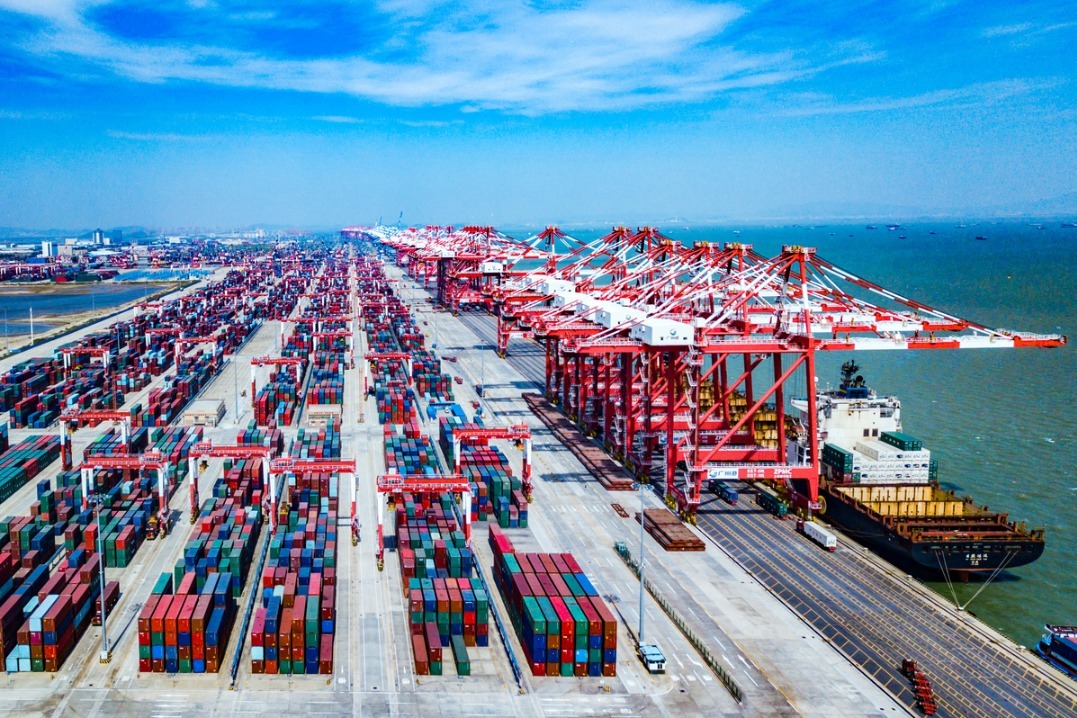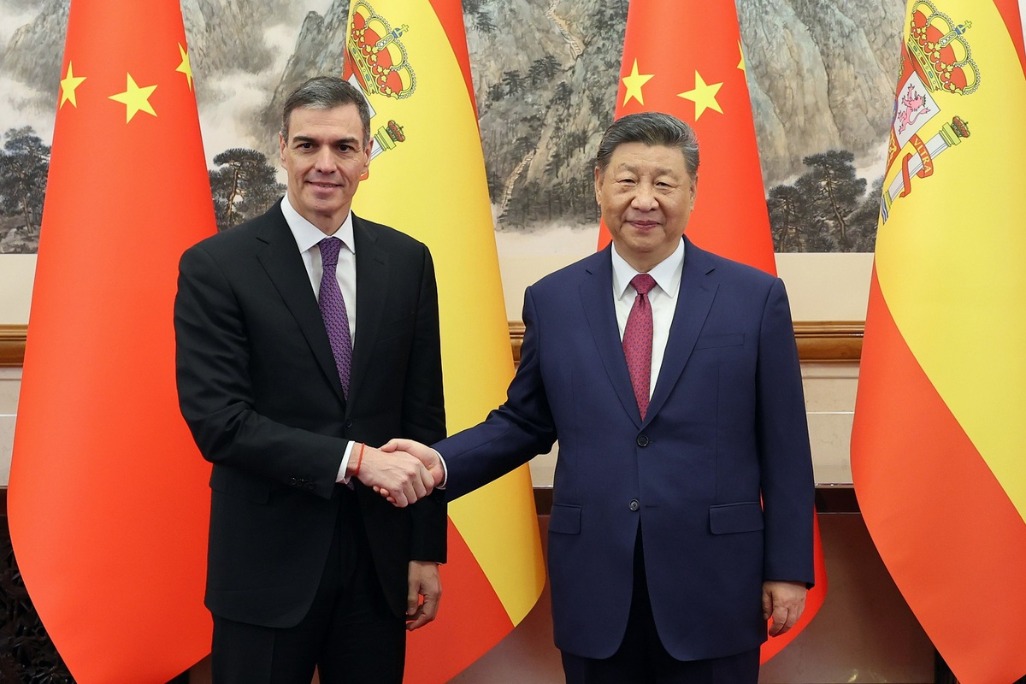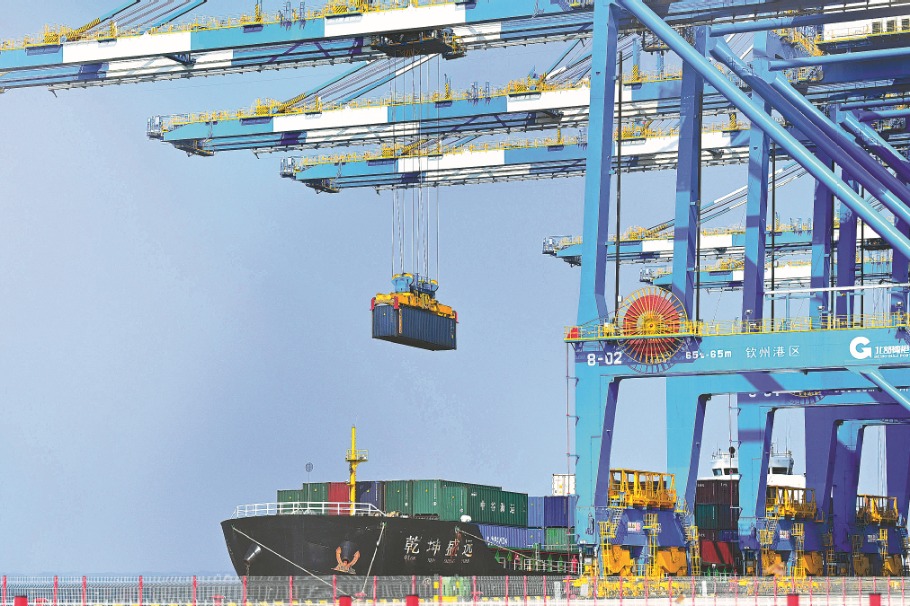President greets orbiting astronauts


Space station's construction 'a milestone' for nation, he tells mission's 3-man crew
President Xi Jinping encouraged the astronauts on board the core module of China's space station to work closely to accomplish their tasks, as he spoke with the crew members on Wednesday morning via video link.
Speaking from the Beijing Aerospace Control Center in a northwestern suburb of the capital, Xi said it was a delight to see that the three astronauts on board the module-Major General Nie Haisheng as mission commander, Major General Liu Boming and Senior Colonel Tang Hongbo-were in good condition and the work was progressing well.
The president, who is also general secretary of the Communist Party of China Central Committee and chairman of the Central Military Commission, extended greetings on behalf of the top authorities and the Chinese people. "We all care about you very much," Xi said.
"The construction of the space station is a milestone in China's space industry, which will make pioneering contributions to the peaceful use of space by humanity," the president told the astronauts. "You are the representatives of those who are striving and climbing in China's space industry in the new era. I hope you will work closely with each other and complete the upcoming tasks."
Xi added: "We wish you a successful mission and a comfortable journey. We will wait for your triumphant return to Beijing."
Nie, noting that this is his third space mission, told Xi that "the conditions are getting better and better" and Chinese astronauts now have "a permanent home operating in orbit".
"We, in distant space, are very proud of our great Party and motherland," the veteran astronaut said. "We will follow your instructions and honor our duties and commitments."
Liu, who is on his second space trip, said it is a great honor and responsibility to participate in this significant mission.
"Later, we will carry out a series of technological verification experiments, including two extravehicular activities and robotic arm operations. We will carry out the operations carefully to ensure the success of all tests," he added.
Tang, who is making his first spaceflight, told Xi that he has adapted to the weightless environment in space. "I eat, live and work well, and I can make video calls with my family. Our home in space is very cozy and comfortable, and we have full confidence in completing the upcoming tasks," he added.
Before the televised conversation, Xi and a host of high-ranking officials watched livestreams of Nie practicing operating a mechanical arm and Liu and Tang assembling a spacesuit designed for extravehicular activity.
A Chinese national flag and a Party flag are tied to the walls of the core module, which is named Tianhe, or Harmony of Heavens.
Pang Zhihao, a spaceflight researcher in Beijing with knowledge of China's manned space program, said the call took place as Tianhe flew over China as the result of careful arrangement to ensure the smooth transmission of video signals between the Beijing center and the module.
"There was a double-insurance mechanism that involved a relay satellite network and ground-based tracking stations, which was intended to make sure the signal transmission would be stable and reliable," he said. "Actually, our Tianlian-series relay satellites alone are capable of realizing such a ground-spacecraft video call."
The country now operates a space-based relay network consisting of four Tianlian satellites in geostationary orbit that are able to transmit signals between spacecraft and anywhere in the world, Pang said.
The three astronauts entered Tianhe on June 17 after their Shenzhou XII spacecraft docked with the module earlier in the day, becoming the first occupants of the module, the first and central component of the Chinese station, which is called Tiangong, or Heavenly Palace. They are scheduled to stay there for three months for a wide variety of tasks.
Their spaceship was launched on a Long March 2F carrier rocket that blasted off on June 17 from the Jiuquan Satellite Launch Center in northwestern China.
Shenzhou XII, the nation's seventh manned space mission, is part of the Tiangong station program, which aims to complete a three-component station in a low-Earth orbit about 400 kilometers above the ground before the end of 2022.
In the near future, three manned missions and three robotic cargo flights will be conducted for the station's construction. Two large space labs will also be lifted to link up with the station.
























